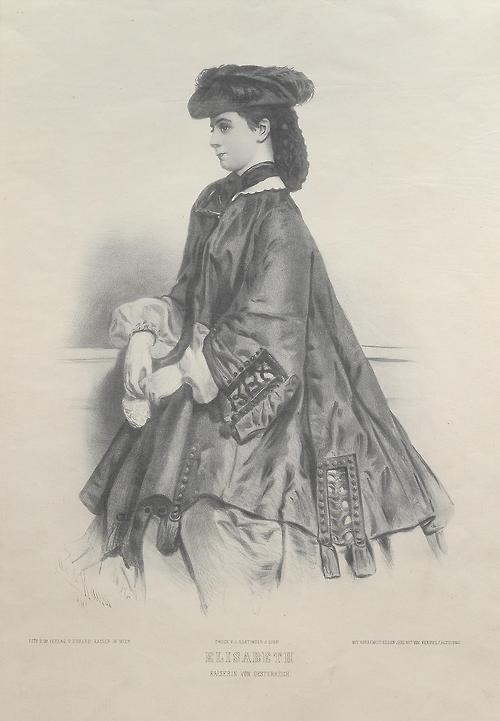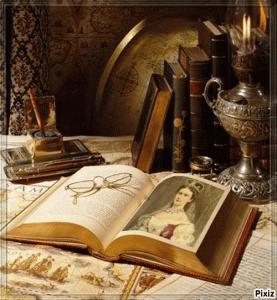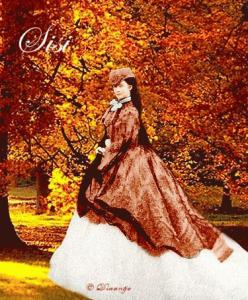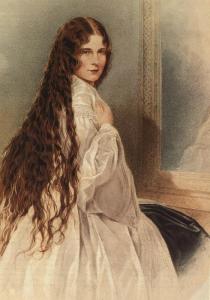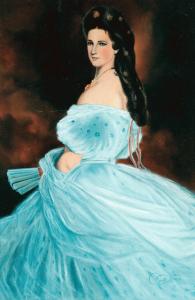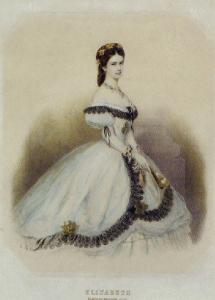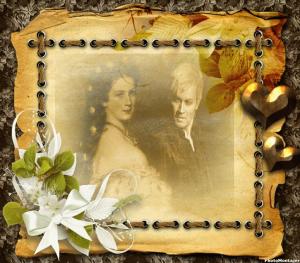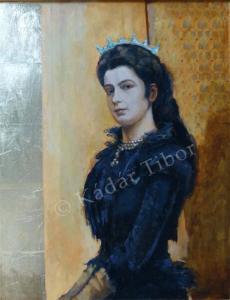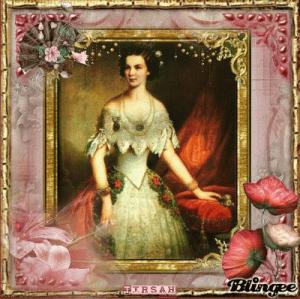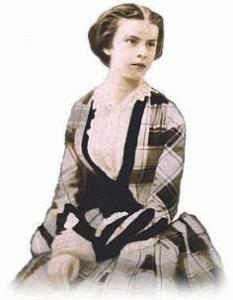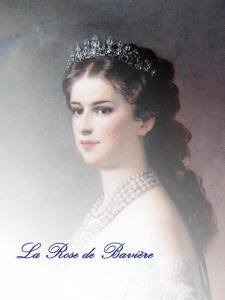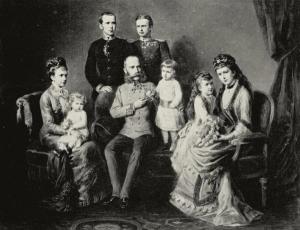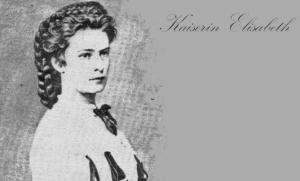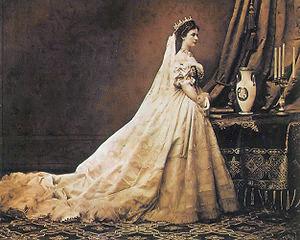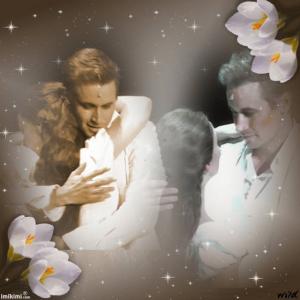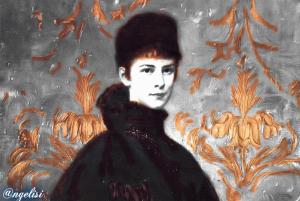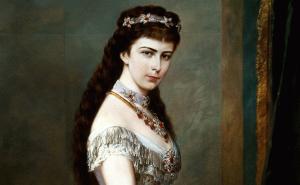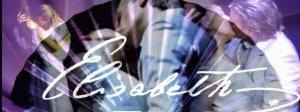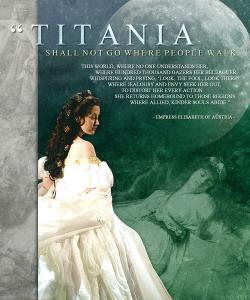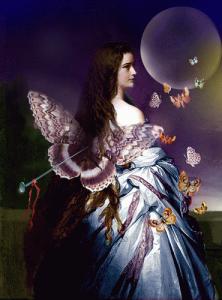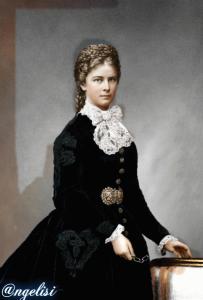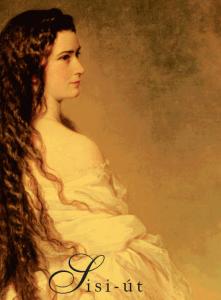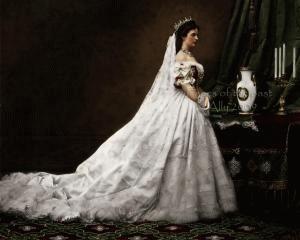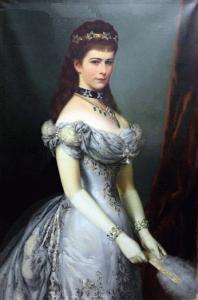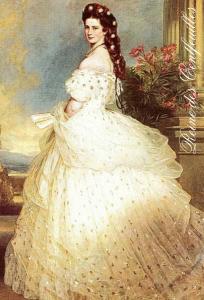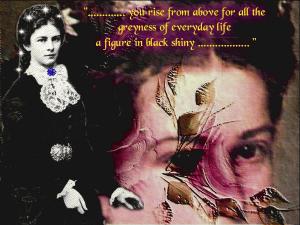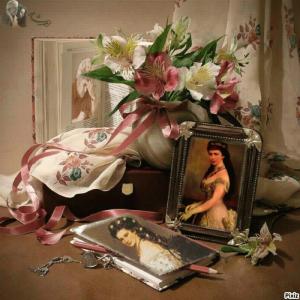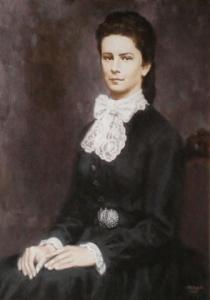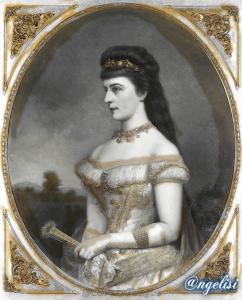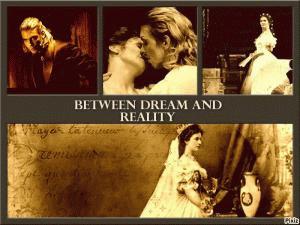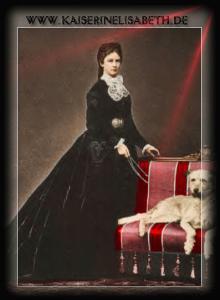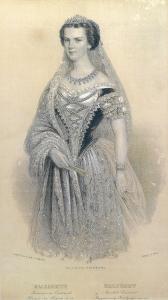wax museum of Schloss Rosegg
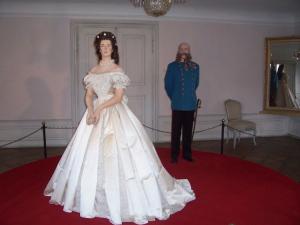
Schloss Rosegg : the wax museum and zoo
Schloss Rosegg 1772 by Prince Orsini-Rosenberg, built for his Italian mistress, Madame Lucrezia. The castle is very like the Italian "Brenta villas," Orsini-Rosenberg spent several years in Italy and wanted this summer home in the heart of Carinthia, bring up some Italian flair!
The furniture and many pieces of equipment are still from that era!
The second owner of the castle was Rosegg Peter Ritter von Bohr. Financial advisor to the Emperor and his character and the long-sought counterfeiters. It was he who founded the modern zoo in Rosegg. For this purpose he lies the castle of the nearby "Raser Knight" wear down and build the zoo Wall from the stones, which today is still the limitation of the game park. From the Bohr Rosegg castle retained but only for two years. Maybe he used the beautiful castle only to whitewash his counterfeit money?
Since 1831 the Rosegg castle is owned by the family of Liechtenstein. Prince John of Liechtenstein, acquired the castle of Peter Ritter von Bohr for one of his sons. Until the seventies, the castle was inhabited until 1995, the castle was uninhabited and since 1997 the castle is again "inhabited". Austria's first Figurencabinett with lifelike characters can be seen here!
Furthermore Images exhibitions of contemporary artists can be seen, summer events, concerts, theater and a small castle café are also located here.
from site: http: //www.rosegg.at/schloss.html
The monument to Elisabeth in Trieste ( thx to our friend Franco Lonzar )
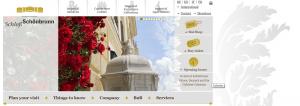
The Sisi Museum celebrates its 10th anniversary: a temporary exhibition allows a fascinating glimpse behind the doors of Elisabeth’s wardrobe
Opened exactly ten years ago, the Sisi Museum in the Vienna Hofburg has become one of Vienna’s most popular attractions, with more than six million visitors passing through its doors since it opened on 24 April 2004. It has proved to be especially popular with a young, female demographic. The collection is continually being expanded, and to mark the museum’s tenth anniversary a temporary exhibition entitled Silk – Lace – Ermine allows us a glimpse behind the doors of Empress Elisabeth’s wardrobe. The exhibition runs from 24 April to 24 December 2014.
10th anniversary of the Sisi Museum. Located between the Imperial Apartments and the Silver Collection in the Vienna Hofburg, the Sisi Museum tells the story of the much-misunderstood empress in rooms that would have been familiar to the most famous ruling Austrian couple, Emperor Franz Joseph and Empress Elisabeth. Seven rooms containing approximately 300 exhibits, 280 of which are original objects once owned by the empress, explore her personality. Conceived by the renowned stage designer Rolf Langenfass (1944-2012), the sensitive presentation is based on poems written by Elisabeth and demonstrates how the carefree young Sisi became a restless, remote and melancholic woman. The Sisi Museum is operated by the Schloss Schönbrunn Kultur- und Betriebsges.m.b.H. (SKB). A dedicated policy of acquisition ensures that the holdings of the Sisi Museum are continually being expanded.
A young, female visitor demographic. Opened on 24 April 2004 to mark the 150th wedding anniversary of Emperor Franz Joseph and Elisabeth, the Sisi Museum has been a crowd-puller ever since. ‘More than six million visitors have visited the museum since it opened’, points out Franz Sattlecker, managing director of the SKB. ‘The Sisi Museum attracts a young demographic: one third of visitors are aged between 16 and 25, and overall the under-35s represent 62 per cent of visitors.’ And a large percentage of these are female, representing two thirds (65%) of all visitors. Among Vienna’s tourists the museum tends to attract visitors from Europe (80 %), including many people from Austria’s neighbouring countries: visitors from Germany are the most loyal fans at 20 per cent, while Austrian visitors represent 6 per cent of all visitors.
A continually expanding collection. Over the years various items have been acquired by the SKB that have expanded the holdings of personal objects connected with the empress and thus contribute to an authentic picture of Elisabeth. ‘The largest acquisition was that of the Klauda Collection in 2006, containing 240 items which included the empress’s travelling medicine chest’, explains Olivia Lichtscheidl, the curator of the Sisi Museum. ‘Some of the objects are very fragile and cannot be displayed permanently for reasons of conservation.’
Temporary exhibition with vintage textiles. For the temporary exhibition entitled Silk – Lace – Ermine mounted to mark the museum’s 10th anniversary, strict conditions for the conservation of the objects on display had to be observed. ‘Despite all the advances that have been made in modern conservation techniques and technology, displaying vintage textiles is one of the most difficult undertakings for a museum curator’, explains Olivia Lichtscheidl. ‘In order to present these precious items of clothing over a longer period of time, the museum staff concerned had to draw on all their specialist knowledge and professional instincts in handling these partially very fragile objects. The textiles can only be displayed in darkened rooms, as exposure to light would damage and ultimately destroy these precious objects.’
The temporary exhibition Silk – Lace – Ermine is being presented in two rooms from 24 April to 24 December 2014. Designed by Thomas Hamann, it offers visitors a tantalizing glimpse behind the doors of Empress Elisabeth’s imperial wardrobe. A number of textile exhibits are being put on display for the first time, including a dress that would deserve an exhibition in its own right for its history alone.
The Blue Dress. In 2012 a dress box was offered for sale at a Munich auction room. Measuring 55 cm by 48 cm by 13 cm, it was neither large nor particularly prepossessing, and even its label, reading ‘To the Schloss Seisenegg Secretariat of His Imperial and Royal Highness Archduke Franz Salvator’ gave little clue to the treasures it contained: a magnificent ensemble from Empress Elisabeth’s wardrobe that had lain hidden away for decades at Schloss Seisenegg, not far from Amstetten in Lower Austria. ‘Subtly cut as usual to emphasize Elisabeth’s slender waist, the blue dress is a highlight from the empress’s Corfu wardrobe’, explains Olivia Lichtscheidl, curator of the Sisi Museum. ‘The two-part ensemble bears the typical emblem of the empress’s Corfu wardrobe, an embroidered crowned dolphin, which was attached to the back of the neck, like a modern-day manufacturer’s label.’
A piece of history. The find has led to a rewriting of history: the blue dress was worn by the empress in the 1890s, and thus after the death of Crown Prince Rudolf. This proves that Elisabeth did not wear only black after her son’s suicide, as has been asserted. The blue dress was bought by the SKB at the Hermann Historica auction rooms in Munich in 2012. It derives from the estate of Empress Elisabeth’s son-in-law. The box also included other textile treasures besides the dress, including accessories and keepsakes from the empress’s estate.
Temporary exhibition Silk – Lace – Ermine
Curator: Olivia Lichtscheidl
Exhibition design: Thomas Hamann
Duration of the exhibition: 24 April – 24 December 2014
Visitor information for the Sisi Museum
Imperial Apartements, Sisi Museum, Silver Collection
Hofburg/entrance Innerer Burghof, 1010 Vienna
Tel. +43 1 533 75 70
[email protected] http://www.hofburg-wien.at
Open daily from 9 am – 5.30 pm (last admission 4.30 pm)
July and August from 9 am – 6 pm (last admission 5 pm)
Press enquiries:
Uta Hauft, tatwort – nachhaltige projekte,
01-409 55 81-11, [email protected]
Sisi Museum: facts, figures and dates
Management
Schloss Schönbrunn Kultur- und Betriebsges.m.b.H.
Dr Franz Sattlecker
Department Research & Documentation
Schloss Schönbrunn Kultur- und Betriebsges.m.b.H.:
Dr Elfriede Iby (Imperial Apartments & Sisi Museum)
Austrian Federal Ministry of Economy, Family and Youth:
Dr Ilsebill Barta (Silver Collection)
Curator
Olivia Lichtscheidl
Location
Seven rooms covering a space of 480 m² in the Imperial Apartments of the Vienna Hofburg. The Sisi Museum is housed in rooms belonging to the Stephan Apartment named after Archduke Stephan Viktor.
Exhibits
Approximately 300 exhibits, including 280 objects and 13 images of the empress
The most valuable exhibit is the painting Empress Elisabeth in a Ball Gown with Diamond Star Ornaments in her Hair, oil on canvas, Franz Xaver Winterhalter, 1865
Smallest exhibit: chain signet, 25 mm
Largest exhibit: the Winterhalter painting, 345 x 222 cm
Guided tours:
Of the more than 6 million visitors, around 158,000 people have taken advantage of a tour of the museum led by in-house guides in German, English, Italian or French. That amounts to an average of 44 per day.
Sisi Museum
Ten years at a glance
2004 – 24 April: Opening of the Sisi Museum
2005 – After only one year, the Sisi Museum has brought the Vienna Hofburg an increase in visitor numbers of around 30%.
2006 – Acquisition of the Klauda Collection comprising around 240 objects, including Elisabeth’s travelling medicine chest.
2007 – On display for the first time in public: the only part of Elisabeth’s wedding dress to have been preserved, a pluvial from Maria Taferl with silver embroidery.
2008 – The diamond star stolen from Schönbrunn Palace in 1998 reappears in Canada and is handed back to Austria. The SKB acquires the star for the Sisi Museum.
2009 – Renovation work and minimal redesign undertaken to mark the museum’s fifth anniversary. Expansion of the permanent exhibition to centre on original objects and a number of spectacular exhibits including the black coat used to cover Elisabeth after the assassination, and the reconstruction of the Hungarian coronation gown.
2010 – The UNHCR donates the income from the empress’s Poetic Journals to a Hungarian school which supports children from immigrant families. The children were also invited to the Sisi Museum, where the displays are based on these journals.
2011 – Presentation of wigs showing three hairstyles worn by the empress at different stages of her life.
2012 – 175th anniversary of the birth of Empress Elisabeth: restoration of the famous Winterhalter paintings of Elisabeth and Franz Joseph; restoration of the empress’s bathroom and additions to the permanent exhibition on the themes of the Empress’s children and her Bavarian siblings.
2013 – Remodelling of the entrance area starts.
2014 – 10th anniversary of the Sisi Museum: temporary exhibition from 24 April to 24 December: Silk – Lace – Ermine.
From site : http://www.hofburg-wien.at/de/wissenswertes/die-hofburg.html
Imperial Trentino: manifestations Habsburg
Sisi Museum Hofburg WIEN
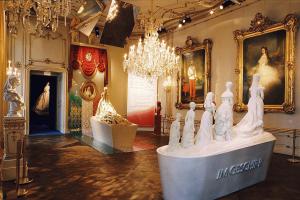
SISI MUSEUM (HOFBURG IN WIEN )
Beautiful and celebrated Empress Elisabeth has long since become a cult figure. The Sisi Museum in the Imperial Apartments of the Imperial Palace compares the myth and the facts. Among the highlights are numerous personal objects once owned by Elisabeth as well as the most famous portraits of the beautiful empress.
Elisabeth’s private life is at the center of the exhibition: her rebellion against court ceremony, her escape into a beauty cult, her obsession with being slim, athletic performance, and effusive poetry. From the carefree time as a young girl in Bavaria to the surprising engagement with the Austrian emperor to her 1898 assassination in Geneva, the museum shows the restless life of the legendary empress.
And does so using numerous objects: On view is one of the few remaining summer dresses, the reconstruction of the dress worn by the young bride on the evening before her wedding as well as the Hungarian coronation dress, famous portraits, a miniature secretaire with envelopes painted in Elisabeth's own hand, Sisi's watercolor painting box, a 63-piece first-aid kit and an accessible reconstruction of Sisi's luxurious imperial saloon car. Items on display from her childhood include her harp, which she brought with her from Bavaria, and a reconstruction of a child's dress.
Sisi's 6-piece mourning jewelry in onyz and jet, which she used to wear with her mourning dress following the death of her son Crown Prince Rudolph, is also on display here in its entirety. The black coat with egret feathers, which covered Sisi after her assassination on Lake Geneva and in which she was taken to the Hotel Beau Rivage, reminds one of the tragic incident as much as the death mask of the murdered empress.
In the Imperial Apartments and the Silver Collection you get a good impression of the daily life of the empire. And at the Hofburg Café you can pamper yourself with culinary delights.
From site : http://www.wien.info/en/sightseeing/sights/imperial/sisi-museum
The Sisi's room in Venice that is reopen
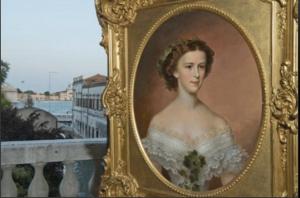
In Venice reopen the secret chambers of Sissi
The Empress arrived on an official visit in 1856, in a climatePolitical and Social contrary to the Habsburgs. Then, in 1861, spent seven months in Laguna. After three years of restoration, the Royal Palace reopens The insignia of the imperial eagle has always remained in place, at least the beginning of the main staircase. It was also convenient to keep the Habsburgs and "share", even though it was a symbol of Napoleon. And despite reminded the former ruler, who took over the House of Austria. But they thundered the Giant Eagle in the staircase, a sign of regained peace and pride punished. History is made of layers of cancellations, a chain that is found the best in the decorative arts that, in parallel, write down these steps. Can start with this cosmetic as to visit a preview of the newly restored apartments of the Empress Sissi, the Royal Palace in Piazza San Marco in Venice (open to the public from mid-July). A string of nine environments, on the side of the basin, overlooking the gardens, built in Napoleonic times. Then, the French, to complete the design of that building, they decided to tear down the church of San Geminiano by Sansovino. To build the "flap" of the bottom of the square, with - in front - a frieze depicting the French emperor on the throne, in the guise of Jupiter. Post Serenissima, the Venetians lived badly the alternation of the Napoleonic and Habsburg yoke until 1866. In between there were the riots of 1848, with Venice cut off from the unification of 1859-60. For the arrival of Sissi and Franz Joseph in the city, preparations began in 1854 with a commission that oversaw the purchase of the furnishings of the rooms, the most important commissioned local artisans. But also in Milan and Vienna, of course, looking at the style of the Vienna Hofburg. The Empress arrived by ship from Trieste to Venice, November 26, 1856. And the entrance of their Majesties were greeted by the local newspaper with emphatic tones: "For a long time Venice ardently longed to pay tribute in a solemn tribute to his loyalty and gladness to the magnanimous lord, on whose sacred head ripesano the destinies of thirty ' eight million subjects, and the lofty Woman called by God to care lenirgli State spargergli of flowers and the path of life and to sanctify the throne, by practice of the most beautiful virtue, the double empire of grace and beauty " .That was the official visit of eighteen Sissi, with baby in tow, lasting 38 days. A longer stay of seven months, took place from October 1861 to May 1862. There was a key figure who served as a junction between the world of the Napoleonic and Habsburg: the artist and designer Giuseppe Borsato (1771-1849), specialist of the ornaments, and it was believed that a disciple of Charles Percier and Pierre-François Fontaine, architects rise of Napoleon and the Empire style. Borsato revisited the kind characterized by winged Victories, trophies, adding more sensuous elements, the color data.Historical path. He was the designer of the main arch on the Grand Canal to the arrival of Napoleon in 1807, and in 1816 the floating stage to welcome Francis I of Austria. The Austrian government promoted in 1834 - '36 many changes in the actual building of the new Procuratie, and Borsato was called to work. The reopening of these areas now inhabited by at Sissi (after Eugene Beauharnais, and then finally also from Savoy) is the result of a virtuous synergy between Renata Codello, superintendent for the Architectural and landscaping and the lagoon of Venice, Gabriella Belli, director of Civic Museums of Venice Foundation (an institution that is self-financing without government grant), and François-Jérôme Zieseniss, president of the French Committee for the Protection of Venice. Action of patronage, this, which focuses precisely on the Royal Palace, started in 2000 with the support of the restoration of the San Geminiano sotoportego giving access to the staircase, with an outlay of 1.3 million euros for recovery of this first tranche of salt. Those who were in fact used to re-open apartments for the Empress, while the other reserved for her husband Franz Joseph remain closed for now, waiting to continue the recovery. Already this first phase, started in 2009 under the supervision of the Superintendent, has led to structural improvements of the rooms and decorations (with the work of specialist Corest), to be able to accommodate many furniture kept in the storage (or the opulent gilded chairs with velvet 700), which will give these local aspects of a royal palace. "It is important that the environments are viewed in light of their historical memory, this already happens for the Palazzo Ducale. But here we are in a more intimate and lived, less 'monumental,' "says Gabriella Belli. "In our country we have great examples of cultural routes through the history of Italy, just visit the Royal Palace of Caserta or Venaria." The recovery of these spaces (owned by the State Property, licensed to the City of Venice) coincided with the relocation of administrative offices of the Superintendent that, by tradition, are often established in buildings that it manages itself. Once released, these rooms have been shown all their Delabre, like the ancient tapestry to shreds, now rebuilt on the original model by Rubelli, an intervention that is also a donation (as are the trimmings of French Houles). François-Jérôme Zieseniss slides on your iPhone photos of before and after. "When I assumed the position of Chairman of the Committee, my predecessor told me:" You never talk of Napoleon in Venice. " Yet it is fair to say "Napoleonic wing of the Correr"! The Royal Palace was a kind of taboo, which effectively silenced the history of decorative arts in Venice in the nineteenth century. While the Napoleonic era had considerable influence on the evolution of taste. Our sponsorship aims to make a systematic restoration and estetio of the whole building, step by step. " Eventually there will be like a journey through 800: from neoclassicism to eclecticism of the end of the century, the Moorish style. Not forgetting that even the Savoy, the Habsburgs took over (on the cover of the Sunday Tribune in 1895 is depicted Empress Sissi who arrives in a gondola to greet the kings of Italy, the new "tenants" of his former palace), introduced small, but significant changes. As in that room whose walls are painted the Hapsburg city of Venice, Prague, Milan and Budapest. The palaces of the lagoon town waving Austrian flags, then change to the Tricolor. "Just as they did with those hands of little boys," says Andrea Bellieni, director of the Museo Correr, which has its headquarters in the same complex. "Vittorio Emanuele II then commissioned a Triumph which is surrounded by figures such as Garibaldi, Mazzini, Manin, the Bandiera brothers ...". Enter now at these apartments named after Sissi, in homage to a popular myth also cinematically celebrated (as in the film by Visconti Ludwig), is to reconstruct a small ancient world. In the room of the ladies of the Court, there is the coat of arms that joined the Iron Crown of Hapsburg Teodolinda, to indicate the sovereignty of the House of the Lombardo-Veneto. In the bathroom of Sissi (before restoration set in a crumbling gray) have re-emerged on the walls golden vines, lilies and cameos. In the bedroom reigns Venus with Cupid and all Cupids. And Paris offers his golden apple. Everywhere, in the decoration of the time, the mythology abounds with birds and deities and motifs from Herculaneum, with nymphs on centaurs and winged horses. Who will be in Venice on June 23 for Artnight (sponsored by the University Ca 'Foscari) can not even visit the apartments, but there is a whole city to live for an intense night. With open museums, poetry recital, movie previews and artist's studio the Bevilacqua La Masa (http://virgo.unive.it/artnightvenezia/). Francesca Pini
Hausburg museum world of Bagni Egart ( Merano )
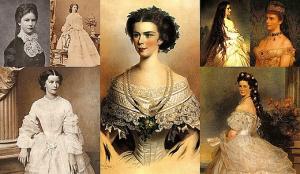
museum world of Bagni Egart ( Merano )
site : http://www.bad-egart.com/italiano/k.u.k.-bad-egart-mondo-museale.html
K.u.K. Museum of Bad Egart
Bathrooms Egart, is the home of the oldest spa Tyrol. It has been shown that the source is used
since 1430. But even in the era of the Romans was used for therapeutic purposes such as drinking water
and thermal baths. The Knight Karl Platinum (Onkel Taa - l `Mr Giulio Andreotti conferred on the `honor Knight
to Mr. Platinum), a great lover of Habsburg, created in 50 years of research and collected what has become the "K.u.K. Museum Bad Egart "where are exhibited the memories of the Habsburg dynasty and especially those of the Emperor Franz Joseph I. Entries and Empress Elisabeth - better known as Sissi.
But they are all at the center of the Habsburg `show very interesting from a historical perspective.
There's also a cave - with the source from which flows the Roman the water, drinking L `Empress Sissi. When L `Empress Elizabeth was to stay in Merano, always visited the Baths Egart to the thermal baths.
Exhibits at the museum showcases over sixty Nouveau, sacred art, porcelain Entries era, objects Biedermeier, erotic art, minerals and fossils, toys, dolls and doll houses that date back to the 19th century and various tools of the trades of the past.
The whole complex is conceived as a work of art, an `authentic mine rich treasures to the delight of fans, of` time of the Austro-Hungarian empire.




